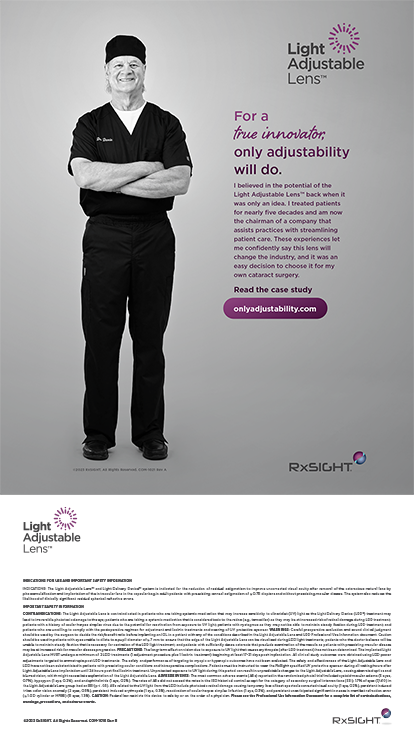
As a corneal surgeon, I have developed immense respect for the cornea. I have seen it withstand intraocular surgery, inflammation, infection, and other insults while remaining resilient. My posterior segment colleagues may sometimes refer to corneal surgeons as mere windshield cleaners. I would argue that we play a pivotal role in preserving vision by maintaining the transparency and integrity of the corneal tissue.
This issue of CRST highlights the importance of respecting the cornea before and after cataract surgery. Several esteemed corneal colleagues describe how they nurture the cornea during the pre-, intra-, and postoperative periods.
Preoperatively, diagnostics are used to map the cornea; help us understand its curvature, structure, and thickness; diagnose pathology; and plan surgery. It is amazing how precise imaging technology has become. I cannot imagine practicing without it.
The importance of optimizing the ocular surface and mitigating corneal toxicity to provide patients with excellent visual outcomes has become more widely understood and accepted. Many novel treatments for dry eye and lid margin disease have emerged and can be combined with surgery for comorbid glaucoma to reduce patients’ eye drop burden. These interventions can protect the cornea and rehabilitate an ocular surface that has experienced chronic inflammation and desiccation.
Modern technology allows us to diagnose corneal surface irregularities such as higher-order aberrations, dystrophies, lesions, and scars that often can be addressed with surgery or laser treatment to reshape the cornea. Addressing corneal lumps, bumps, and irregularities in appropriate candidates creates a more regular shape, which can improve the accuracy of preoperative corneal measurements and provide better image quality postoperatively.
Numerous IOL technologies, including enhanced monofocal, small-aperture, extended depth of focus, and light adjustable lenses, have been released during the past few years. A standard monofocal lens may be the most suitable option for some patients with corneal disease, but we should not rule out newer IOL technologies in this population. By adopting a refractive mindset at the time of cataract surgery, engaging in thoughtful patient selection, and carefully monitoring postoperative outcomes, we can better serve patients with complex corneas and visually significant cataracts.
Implementing techniques and maneuvers to improve visualization through a scarred or cloudy cornea is critical to completing cataract surgery safely. Entering the OR with an ideal plan and multiple backups helps us navigate complexity more efficiently and reduces the risk of complications.
Finally, we must ensure that the cornea heals after surgery. The tissue is resilient, but it can grow susceptible to keratitis, limbal stem cell deficiency, or even endothelial dysfunction. We must dig deep into our armamentarium to address these conditions and restore corneal clarity. The development of novel topical and injectable cell therapies and biologic tissues is exciting.
I hope this edition of CRST motivates readers to respect the cornea. It is a small but mighty part of the eye and integral to maintaining excellent vision in our patients.




